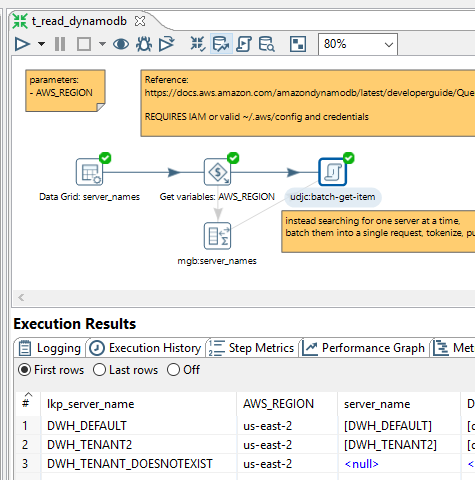
However, you must note that with the global tables in place, you must keep your data consistent. This feature offers you greater resilience against disaster. This enables you to distribute data across multiple regions in DynamoDB global tables. Unlike many of the traditional SQL systems where you can create data models long before knowing how the data will be analysed, with DynamoDB, the data should be modelled based on the various types of queries that you seek to run.Īmazon Web Services ensure that DynamicDB tables have Availability Zones. There is no predefined schema to data in the table as each partition can be quite different from others. In this, the Data is indexed with the help of a primary key composed of a sort key and partition key. However, the exact nature of data on disk remains hidden from the DybamoDB’s end users.ĭynamoDB is a key-value store database which uses documented-oriented JSON data model. Here the implementation of DynamoDB’s data storage format remains proprietary.ĭata in DynamoDB is usually exported via bulk downloaded into CSV files through AWS Glue or via streaming technologies. DynamoDB does support JSON, but it only utilizes it as a transport format instead of a storage format. It is affordable for users when they start.įor managing data, DynamoDB uses b-trees and hashing. It makes it easy for users to start and evolve their database. It provides multiple availability zones for disaster recovery. It supports the predictive levels of provisioned throughput at latencies which are relatively low. It provisions hardware on the backend automatically in such a way that it’s invisible to the user. It provides ‘as-a-service’ so that the users don’t need to maintain the database. If we have a look at the DynamoDB’s design principles then it is required to provide the below attributes: Managed It’s because many things in the Big Data industry have changed over the years.ĭynamoDB was designed on the foundation of a core set of distributed systems principles which would result in a highly reliable and ultra-scalable database system. It’s true that DynamoDB got inspired by the original paper however, it didn’t stay holding to it for too long. Amazon DynamoDB is a customer-oriented Database as a Service (DBaaS) which runs on AWS and Elastic Compute Cloud (EC2) instances.ĭynamoDB was released in the year 2012 which was five years after it got inspired by the original white paper. This white paper showed quite a contrast to Google’s Bigtable paper which published a year ago in 2006.ĭynamo database was originally intended to use at Amazon as a proprietary solution. The seminal Dynamo white paper (2007) written by the team of Amazon developers served as the inspiration for DynamoDB. Rather, they integrate an AWS SDK into the application which handles the backend communications with the server. Users don’t make DynamoDB API calls directly. Users can also specify a service level of write capacity units (WCUs) and read capacity units (RCUs). With this, you can manage as to how many kilobytes of traffic or how many transactions you wish to support per second.

you define database on the basis of provisioned capacity. Instead, you just provision the throughput, i.e. Whenever you set up DynamoDB on AWS, then you don’t allocate set amounts of disk or provision specific servers. However, we can describe how it interacts. We cannot describe what exactly the DynamoDB is as the cloud-native database architecture is proprietary closed-source. Although, there’s a development version called DynamoDB Local which is written in Java. Each key uniquely identifies each item.Īpart from the Amazon employees, not many of us know much about the exact nature of DynamoDB. Every DynamoDB query is executed with the help of a primary key which is identified by the user.

Apart from that, it also allows graphs, documents, columnar among its data model.Ī user first stores the data in DynamoDB tables and then interacts with it through PUT and GET queries which are write and read operations respectively.ĭynamoDB supports conditional operations and basic CRUD operations. The data is stored on solid-state drives which offer high I/O performance along with efficiently handling high-scale requests.ĭynamoDB uses a NoSQL database model which is nonrelational.

Furthermore, it can also serve any level of request traffic. DynamoDB is known for its scalability and latencies.Īs per AWS, DynamoDB cuts cost and makes it easy to store and retrieve any amount of data. So, without any further ado, let’s begin.ĭynamoDB which is also known as Amazon Dynamo Database or DDB is a NoSQL database service provided by Amazon Web Services.
#Local dynamodb cant find credentials how to#
We’ll also provide you with a detailed tutorial on how to set up your own DynamoDB database locally.


 0 kommentar(er)
0 kommentar(er)
